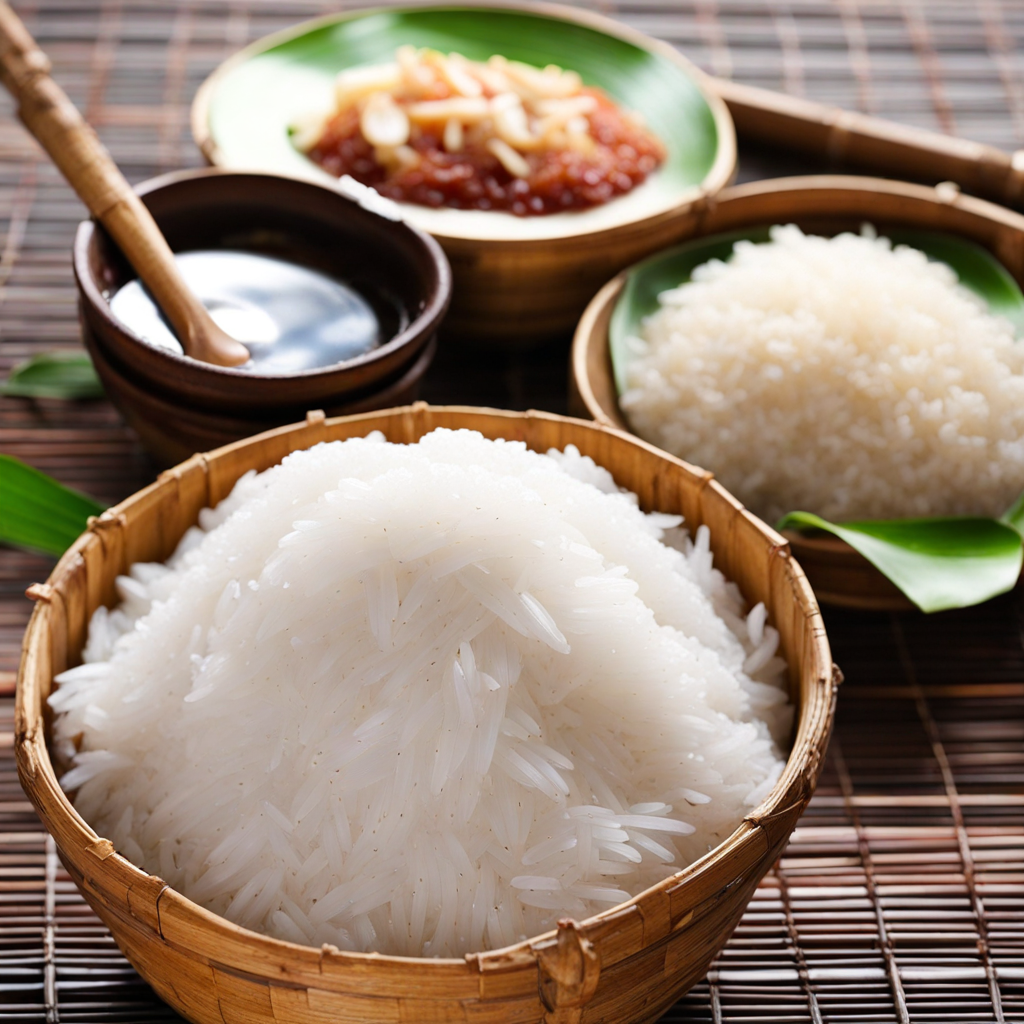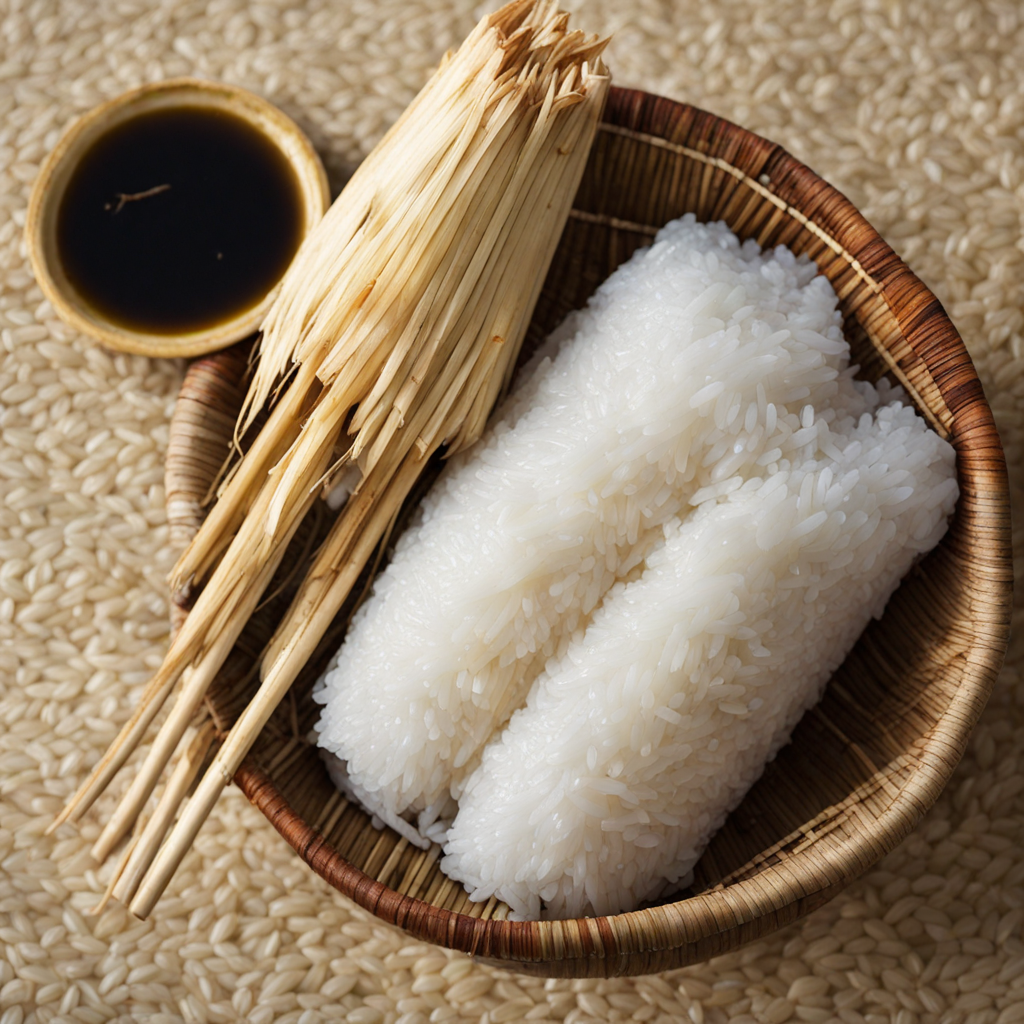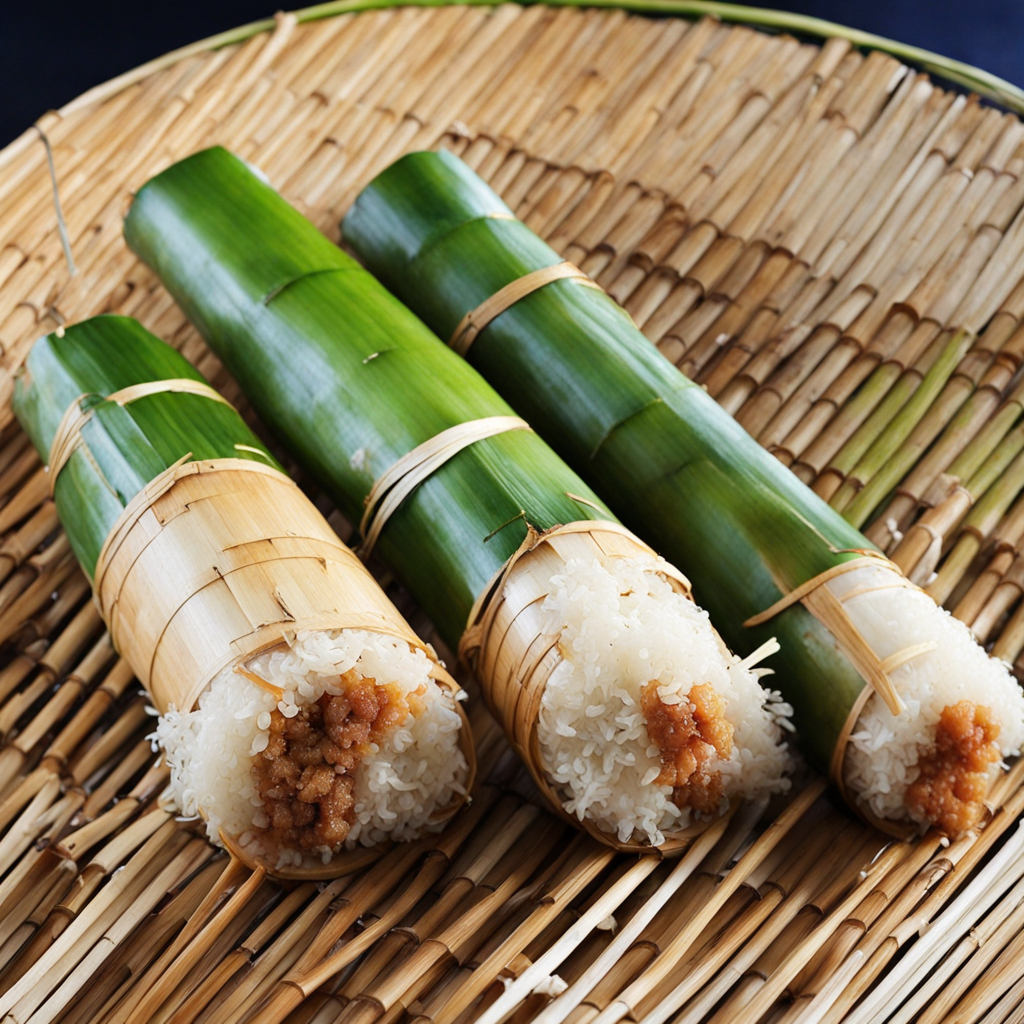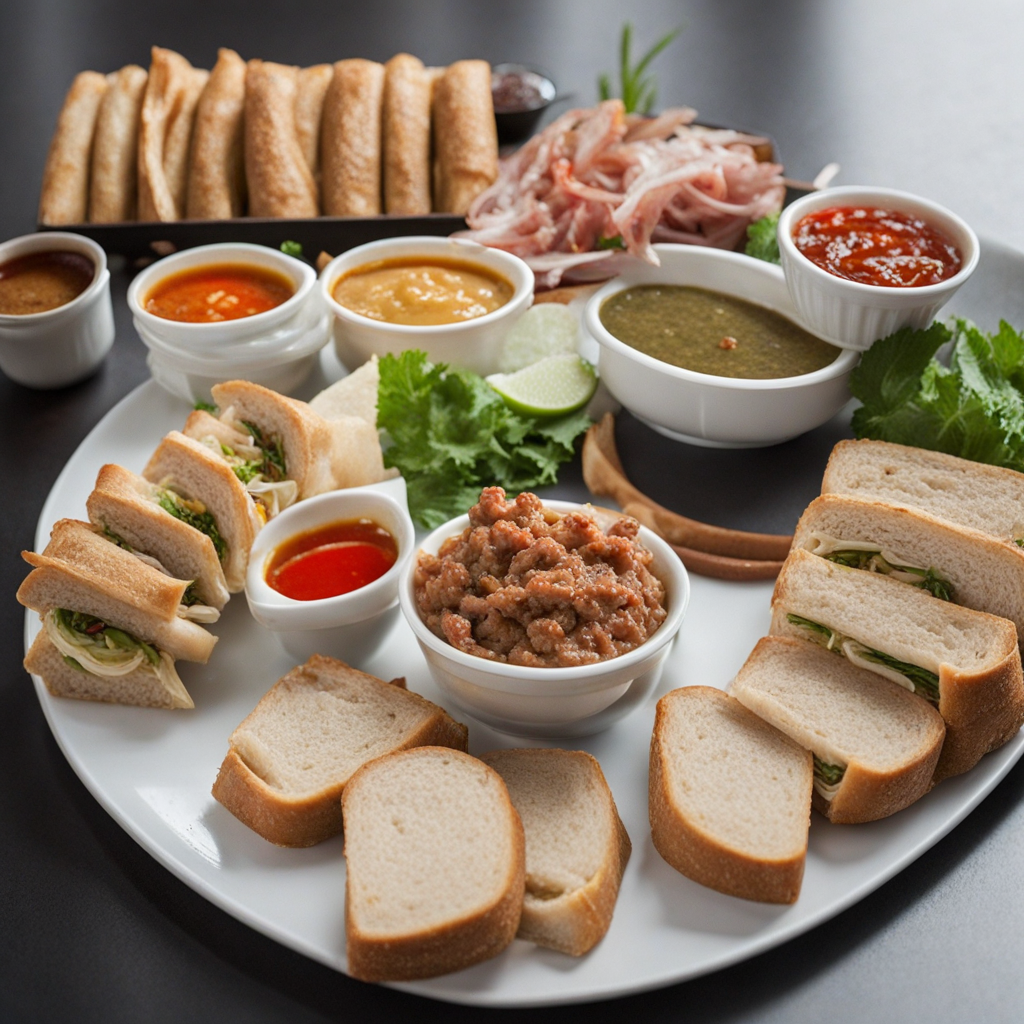Sticky Rice
ເຂົ້າໜຽວ, pronounced "khao niaw," is a traditional sticky rice dish that holds a significant place in Laotian culture and cuisine. Known for its unique texture and versatility, sticky rice has been a staple food in Laos for centuries, deeply rooted in the agricultural practices of the region. Its history is intertwined with the cultivation of rice in Southeast Asia, where sticky rice varieties thrive in the wet, fertile conditions of the Mekong River basin. The cultivation of sticky rice is not just an agricultural practice but a cultural tradition, with families often coming together during harvest seasons to partake in the process. The flavor of ເຂົ້າໜຽວ is subtle and slightly sweet, with a chewy texture that differentiates it from regular long-grain rice. When cooked properly, sticky rice has a pleasantly glutinous quality that allows it to clump together, making it ideal for eating with the hands, a common practice in Laos. The flavor is often complemented by accompanying dishes, which can range from spicy grilled meats to fresh vegetables and rich sauces, creating a harmonious balance on the palate. Preparation of ເຂົ້າໜຽວ involves a specific method that highlights its unique characteristics. First, glutinous rice is soaked in water for several hours, typically overnight, to ensure it absorbs moisture uniformly. After soaking, the rice is drained and
How It Became This Dish
Origin of ເຂົ້າໜຽວ ເຂົ້າໜຽວ, or sticky rice, is a fundamental component of Laotian cuisine that has roots deeply embedded in the agricultural practices of Southeast Asia. Its origin can be traced back over 2,000 years, with the domestication of glutinous rice varieties in the region, particularly around the Mekong River basin. Unlike non-sticky rice varieties, which are more common in other parts of the world, sticky rice has a unique quality that makes it pliable and capable of clumping together when cooked, making it easy to eat with the hands, a common practice in Lao dining culture. Laos's diverse climate and fertile soil provide ideal conditions for rice cultivation, and sticky rice quickly became a staple food among the Lao people. It is believed that the tradition of consuming sticky rice originated among the Lao ethnic groups, who relied on it as a primary carbohydrate source. Over centuries, sticky rice not only became a dietary staple but also a central element in various cultural and social practices. \n\n Cultural Significance The cultural significance of ເຂົ້າໜຽວ transcends its role as mere sustenance; it is a vital part of Laotian identity and community life. Sticky rice is often referred to as “the soul of the Lao people,” symbolizing unity and shared experience. In Laos, meals are typically communal, and sticky rice is often served in a woven bamboo basket, allowing diners to partake directly from a shared source. This practice fosters a sense of togetherness and hospitality, essential values in Lao culture. Sticky rice also plays a prominent role in various traditional ceremonies and festivals, such as the Boun Pi Mai (Lao New Year) and Boun That Luang. During these events, sticky rice is often prepared in special ways, such as grilled or steamed with fillings, and served as part of elaborate feasts. It is not uncommon for families to engage in the ritual of preparing sticky rice together, reinforcing familial bonds and passing down culinary traditions through generations. \n\n Development Over Time As Laos modernized in the 20th century, the production and consumption of ເຂົ້າໜຽວ evolved. While traditional methods of cultivation and preparation remained prevalent, the introduction of new technologies and agricultural practices began to influence sticky rice farming. Although mechanization improved efficiency, many farmers opted to preserve traditional methods, recognizing the cultural importance of sticky rice. This balancing act between tradition and modernization has become a defining aspect of Laos's agricultural landscape. In urban areas, sticky rice has adapted to contemporary culinary trends, often appearing in fusion dishes and street food. Chefs and food vendors have incorporated sticky rice into various recipes, showcasing its versatility. From sticky rice desserts, like the popular "khao niew mamuang" (sticky rice with mango), to innovative savory dishes, the integration of sticky rice into modern cuisine reflects the dynamic nature of Lao food culture. \n\n Regional Variations The preparation and consumption of ເຂົ້າໜຽວ can vary significantly across different regions of Laos. For instance, in northern Laos, sticky rice is often enjoyed with fermented fish and traditional herbal dips, highlighting the area's rich biodiversity. In contrast, central and southern Laos may incorporate coconut milk or sugar, giving the sticky rice a sweeter profile, especially in desserts. These regional differences not only showcase the diverse culinary landscape of Laos but also highlight the adaptability of sticky rice as a staple food. Furthermore, the Lao diaspora has played a crucial role in spreading the appreciation for sticky rice beyond its borders. As Laotians migrated to countries such as the United States, France, and Australia, they brought their culinary traditions with them, including the beloved sticky rice. In these new settings, sticky rice has found its place in multicultural food scenes, often enjoyed by individuals from various backgrounds who appreciate its unique texture and taste. \n\n Health and Nutritional Aspects Sticky rice is not only culturally significant but also offers several health benefits. It is gluten-free, making it an excellent option for individuals with gluten sensitivities. Additionally, sticky rice is rich in carbohydrates, providing a quick source of energy. When combined with traditional side dishes, such as grilled meats, fresh vegetables, and herbs, it contributes to a balanced diet that is characteristic of Lao cuisine. However, there are considerations regarding its consumption. Sticky rice has a higher glycemic index compared to non-sticky rice, which means it can cause a rapid increase in blood sugar levels. Therefore, moderation is key, especially for those with diabetes or other health concerns. Despite this, sticky rice remains a beloved staple, celebrated for its comforting qualities and its ability to bring people together. \n\n Global Recognition In recent years, there has been a growing appreciation for Laotian cuisine on the global stage, and sticky rice has emerged as one of its star components. Food enthusiasts and chefs are increasingly recognizing the richness of Lao flavors and the cultural narratives embedded in its culinary practices. Cookbooks, food festivals, and culinary tours focusing on Lao cuisine have introduced sticky rice to a wider audience, celebrating its unique qualities and the stories that accompany it. The rise of food media, including social media platforms, has also contributed to the visibility of ເຂົ້າໜຽວ. Videos and posts showcasing the preparation and enjoyment of sticky rice have gone viral, enticing food lovers to explore this traditional dish. As more people discover the joys of sticky rice, it is likely to continue evolving while retaining its deep cultural roots. \n\n Conclusion In conclusion, ເຂົ້າໜຽວ serves as a cornerstone of Laotian cuisine, encapsulating the rich history, culture, and traditions of the Lao people. Its journey from ancient agricultural practices to modern culinary trends reflects both resilience and adaptability. As it continues to be enjoyed both locally and globally, sticky rice remains a delicious symbol of unity, identity, and the enduring legacy of Laotian culinary heritage.
You may like
Discover local flavors from Laos







